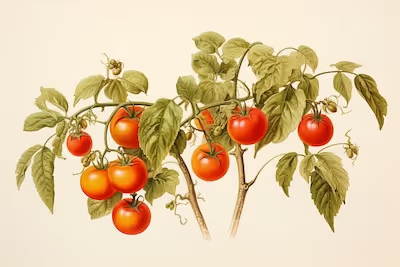Creating A Sustainable Food Forest For The Whole Family

Food Forests
Planting food forests revitalizes your yard, feeds your family, and boosts local biodiversity. Start small—layer fruit trees, berry bushes, and edible perennials to mimic nature’s efficiency in your own backyard. Well-planned and maintained food forests can yield abundant harvests, shrink grocery bills, and nurture the next generation's connection to the earth. Ready to dig deep and cultivate your edible oasis?
🌳 Cheatsheet: Creating a Sustainable Family Food Forest
🌿 Planning Basics
- 🍎 Choose edible perennials: fruit trees, berries, herbs, vines, edible shrubs.
- 🧩 Arrange in layers: canopy, understory, shrub, herbaceous, root, groundcover, vine.
- 🗺️ Assess site conditions: sunlight (4-8 hrs daily), water drainage, soil fertility.
- 📏 Plan paths: easy access; allow 2-4 ft (0.6-1.2 m) pathway width.
🌱 Plant Selection & Placement
- 🍐 Fruit & nut trees: apple, pear, cherry, plum, almond.
- 🌰 Nitrogen-fixers: peas, beans, clover, legumes improve soil naturally.
- 🌼 Pollinator-friendly plants: lavender, echinacea, calendula attract beneficial insects.
- 🥦 Nutrient-dense vegetables & greens: kale, spinach, chard, broccoli.
- 🍓 Ground covers & vines: strawberries, sweet potatoes, mint, grapevines fill gaps.
🌾 Soil Health & Water Management
- 🍂 Mulch thoroughly: add wood chips, leaves, straw 2-4 inches (5-10 cm) thick.
- 💧 Efficient watering: drip irrigation, rain barrels; reduce water use by up to 50%.
- 🐛 Build healthy soil: compost regularly; encourages beneficial microbes.
🐞 Pest Management & Maintenance
- 🐦 Attract natural predators: birds, ladybugs, lacewings control pests naturally.
- 🌾 Practice crop diversity: reduces pests by up to 90%.
- 🧹 Minimal pruning & weeding: save time, maintain ecosystem balance.
👨👩👧👦 Family Involvement & Benefits
- 👩🌾 Involve kids early: teach stewardship, healthy eating.
- 🥗 Boost family nutrition: fresh, organic, nutrient-rich foods.
- 🏡 Increase self-sufficiency: reduce grocery dependence by up to 70%.
Why Food Forests Belong in Your Backyard
My first encounter with food forests happened over a decade ago, beneath fig trees heavy with sweet fruit and humming bees. Watching my kids pick ripe berries straight from bush to mouth, I knew there was no turning back.
A food forest is a diverse, multi-layered garden modeled after natural forests, intentionally designed to mimic ecosystems. It’s edible ecology at its finest—working smarter rather than harder.
Designing Your Family Food Forest Step-by-Step
Selecting and Arranging Layers
A food forest thrives thanks to clever layering. Diversity breeds resilience, and here’s how it breaks down:
- Upper Canopy: Fruit or nut trees like apples, pears, walnuts, or chestnuts anchor your plot.
- Lower Canopy: Smaller trees such as dwarf citrus or figs follow suit.
- Shrub Layer: Berry bushes—raspberries, blackberries, currants—fill in the mid-level.
- Herbaceous Layer: Edible greens, culinary herbs, rhubarb, or asparagus grow beneath.
- Groundcover: Low-growing plants like strawberries or chamomile spread gently across the soil.
- Root Crops: Carrots, sweet potatoes, radishes enrich below-ground biodiversity.
- Vertical Climbers: Beans, grapes, passionfruit, or kiwi scale trellises or trees vertically, maximizing productive space.
The Right Plants for Your Zone—and Your Palate
Ecological success hinges upon selecting plants suited to your local climate. I made my share of mistakes—like attempting mangoes in Oregon (spoiler alert: failed miserably)—but learning your growing zone saves heartbreak and fosters productivity.
Check your region’s USDA or European plant hardiness maps before selecting perennial layers. If unsure, local nurseries often hold hidden wisdom and regional favorites.
Cultivating Soil Health—The Foundation of Abundance
When I started gardening decades ago, I overlooked soil completely—the folly of youth! Today, experience taught me the vitality of soil fertility, especially within a food forest context.
Mulching liberally with woodchips, leaves, compost, and grass clippings encourages earthworms and beneficial microorganisms. Healthy soil means less watering, less weeding, and infinitely healthier produce.
"Just 1% increase in organic matter helps your soil retain an extra 20,000 gallons (75,700 liters) of water per acre (0.4 hectares)." — USDA Natural Resources Conservation Service
That’s sustainability in action.
Bringing the Family Aboard—Food Forests and Kids
Watching children discover edible treasures growing outside their doors is priceless—my youngest once exclaimed, "These raspberries taste way better than grocery ones!"
Get kids involved early:
- Let them choose and plant their favorite fruits.
- Create miniature zones dedicated entirely to their own experiments.
- Encourage play within the natural shade and structure food forests provide.
Maintaining Your Family Food Forest
Unlike traditional vegetable patches, food forests fulfill a self-maintaining promise. Nature genuinely wants to thrive—your role is gentle guidance.
Annual pruning, occasional mulching top-ups, and thoughtful observation ensure balance and productivity. Pest problems diminish as biodiversity increases; each challenge becomes an invitation to learn the rhythms and personalities unique to your garden.
Sharing Bounty, Building Community
I’ve discovered food forests quickly generate abundance—often far exceeding your family’s needs. Consider establishing neighborhood "harvest swaps," donating excess produce to local food banks, or simply gifting baskets of fresh fruit to grateful friends.
Your food forest nourishes far beyond backyard boundaries; it transforms relationships and communities through shared abundance.
Frequently Asked Questions About Food Forests
What makes food forests beneficial for families?
A food forest supports family-friendly gardening through edible perennial plants, fruit trees, herbs, and shrubs, creating an accessible source of fresh produce. It encourages children and adults alike to actively participate, promoting connection to nature, food education, and sustainable living practices.
Which edible plants are best suited for food forests?
Effective food forests contain layers of plants working together. Ideal species include fruit-bearing trees such as apples, pears, or cherries; berry bushes like raspberry and blueberry; perennial herbs including thyme, mint, and oregano; leafy plants like kale and spinach; and hardy ground covers such as strawberries or edible flowers. Choose plants adapted to your local climate and soil conditions to ensure successful growth.
How much space does a family food forest require?
A well-planned food forest can thrive in various sizes and spaces. Families can start small, even in a space of approximately 100–200 square feet (9–18 square meters), and scale as desired. Larger areas of about 1,000 square feet (93 square meters) or more provide the opportunity to introduce a wider diversity of plant layers, enhancing sustainability and productivity.
Do food forests require significant maintenance?
Once established, food forests become largely self-sustaining due to their ecological diversity. Early stages involve regular pruning, watering, and mulching to encourage healthy growth, but within two or three years, maintenance needs decrease dramatically. Regular monitoring for pests and occasional trimming maintains productivity and plant health.
What climate conditions support successful food forests?
Food forests adapt naturally to numerous climates, from temperate zones to subtropical environments. Temperatures ranging between 50°F to 85°F (10°C to 30°C) are optimal for many varieties. Selecting hardy, regionally adapted plants improves success and resilience, even in climate extremes such as harsh winters or hot summers.
How long does it take before a food forest produces food?
While annual plants may yield crops within months, the primary pillars of food forests—fruit and nut trees—typically take two to five years for initial harvests. Berry bushes and perennial vegetables often produce consistently after a year or two. Thoughtful planning ensures steady food availability from the outset, building toward full productivity over time.
Creating vibrant, productive food forests means crafting spaces where nature and family thrive together—where each plant serves a purpose, nourishing both body and soul. These abundant ecosystems teach patience, resilience, and stewardship, allowing families to reconnect with the cycles of growth and renewal. Establishing a sustainable food forest isn't merely gardening—it's cultivating a legacy of balance, flavor, and shared joy. Plant thoughtfully, tend wisely, and watch life flourish.
Find out which plants will thrive in your garden!
Answer a few fun questions and get custom plant recommendations perfect for your space. Let’s grow something amazing together!

start your season





